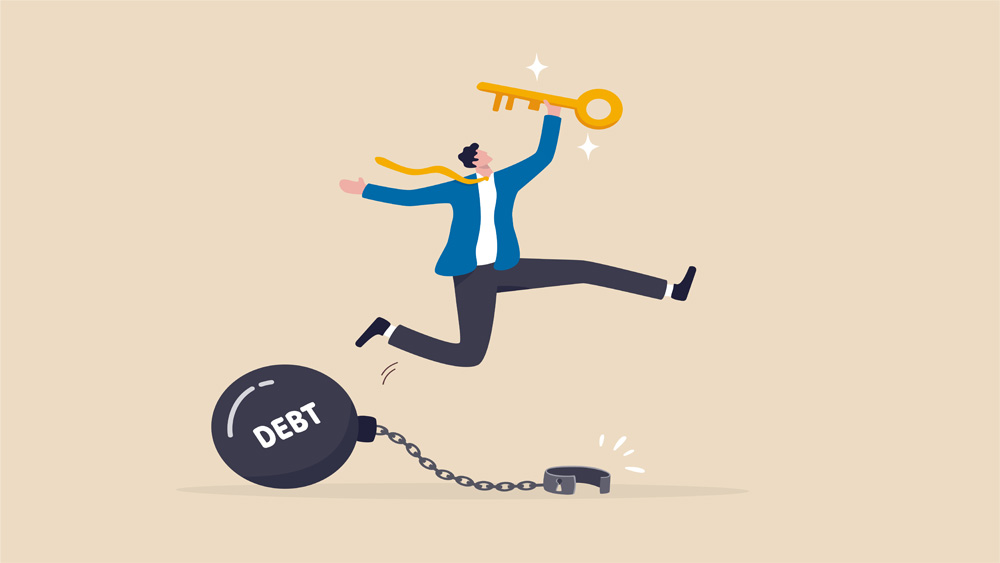
Debt is an issue that many people deal with daily. Keeping up with your finances and moving toward financial freedom with credit card debt, school loans, and personal loans can be challenging. You’re not alone if your debt is taking over your life. The good news is that you can take action to reduce your debt and raise your credit score.
Step 1: Evaluate Your Debt
The first stage in paying off debt is determining how much and what kinds of debt you have. To prioritize your payments and work toward debt freedom, you must clearly grasp your debt. Only then can you make wise choices. List each loan you have, noting the balance due, the interest rate, and the required minimum payment each month. Completing these steps will give you a better view and identify the loans costing you the most in interest.
Step 2: Creating a Budget
Once you grasp your debt well, it’s time to make a budget. Creating a budget is an effective way to take charge of your finances and handle your debt. With the help of a budget, you can work out how much money you have each month to put toward paying off debt by looking at your income and expenses. Include everything you spend, including your rent or mortgage, utilities, food, travel, and other necessary costs. Once you have your budget laid out, it will help you see exactly how much money you have each month left over to use for debt repayment.
Step 3: Sort Your Debt by Priority
Now that you have a budget, it’s time to rank your debt. Make minimal payments on each loan when you begin, then concentrate on clearing the one with the highest interest rate first. Over time, this will enable you to reduce your interest expenses. Roll the money you were paying toward each debt as you pay it off into your payments for the obligation with the next highest interest rate. This “snowball method” can assist you in moving closer to financial freedom more quickly.
Step 4: Take into Account Debt Consolidation
Consider debt consolidation with a balance transfer credit card or a personal loan if you have several credit card accounts with high interest rates. A balance transfer account can lower your interest costs and help you manage your debt better. Before selecting a debt consolidation plan, do your homework and compare rates and costs. Also, make sure you can pay off your balance transfer account before those high interest rates kick in.
Step 5: Prevent Acquiring New Debt
Refraining from acquiring additional debt while paying off your existing debt is crucial. This entails refraining from making pointless purchases with your credit cards and restraining yourself from applying for more loans. If you must use your credit card, pay the balance in full each month to prevent interest from accumulating.
Step 6: Keep an Eye on Your Credit Rating
Monitoring your credit rating as you pay off your debt is crucial. Your credit score indicates your creditworthiness and can affect your ability to get approved for loans, credit cards, and other financial goods. You can monitor your credit score through websites like Credit Karma or Credit Sesame without charge. Make sure your credit report is correct by keeping an eye on it. Make sure to dispute any inaccuracies you find with the credit bureau to reflect them appropriately in your report.
Step 7: Recognize Your Success
Lastly, remember to recognize your accomplishments as you pay off your debt. Debt repayment is a lengthy process; therefore, it’s critical to appreciate each little victory along the journey. If you want to motivate yourself, think about setting goals like paying off a specific amount of debt or achieving a particular credit score. Reward yourself when you accomplish these goals. Acknowledging your progress may maintain your motivation and commitment to your debt-reduction journey.
It takes perseverance, commitment, and a well-thought-out plan to repay debt and raise your credit score. You can take control of your money and move toward financial freedom by looking at your debt, making a budget, setting priorities, consolidating your debt if necessary, avoiding taking on more debt, keeping an eye on your credit score, and celebrating your success. Remember that eliminating debt is a journey rather than a destination, so go easy on yourself, remain dedicated, and enjoy your victories as you go. You’ve got this.
Marimark Mortgage
Marimark Mortgage is based in Tampa, Florida, and proudly serves homebuyers and homeowners in all of Florida, Virginia, and Pennsylvania.
We specialize in conventional home mortgages, FHA, VA, and USDA mortgage options, refinance loans, and reverse mortgages. We’ve worked extensively with cash-out refinancing, and help clients to lower their monthly mortgage payments.
To get started with a mortgage to buy your next home, please fill out our Quick Mortgage Application, or contact us direct.

The Marimark Mortgage Newsletter will keep you informed with important events in the mortgage industry that could impact your finances.
We especially focus on ways to save money on your current and future mortgages. And, we continually share the information we share with our clients, because we believe informed consumers are the best consumers.
Real estate agents, and other professionals in the industry, will receive an ongoing wealth of information that will help them serve their clients.